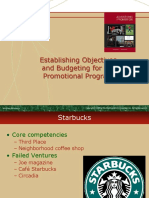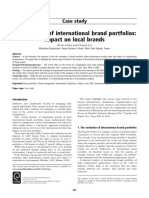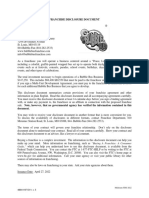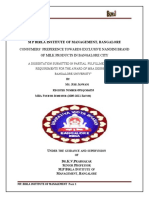0% found this document useful (0 votes)
81 views26 pagesAdvertising Management: Session 7:advertising Budget Term: VI
ad management
Uploaded by
Arijit DasCopyright
© © All Rights Reserved
We take content rights seriously. If you suspect this is your content, claim it here.
Available Formats
Download as PPTX, PDF, TXT or read online on Scribd
0% found this document useful (0 votes)
81 views26 pagesAdvertising Management: Session 7:advertising Budget Term: VI
ad management
Uploaded by
Arijit DasCopyright
© © All Rights Reserved
We take content rights seriously. If you suspect this is your content, claim it here.
Available Formats
Download as PPTX, PDF, TXT or read online on Scribd
/ 26























































































